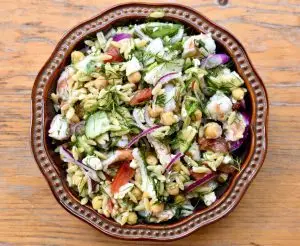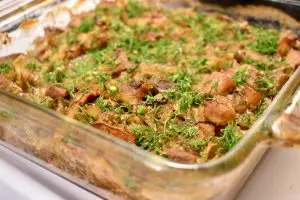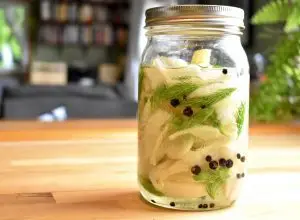How to Make Fermented Dill Pickles
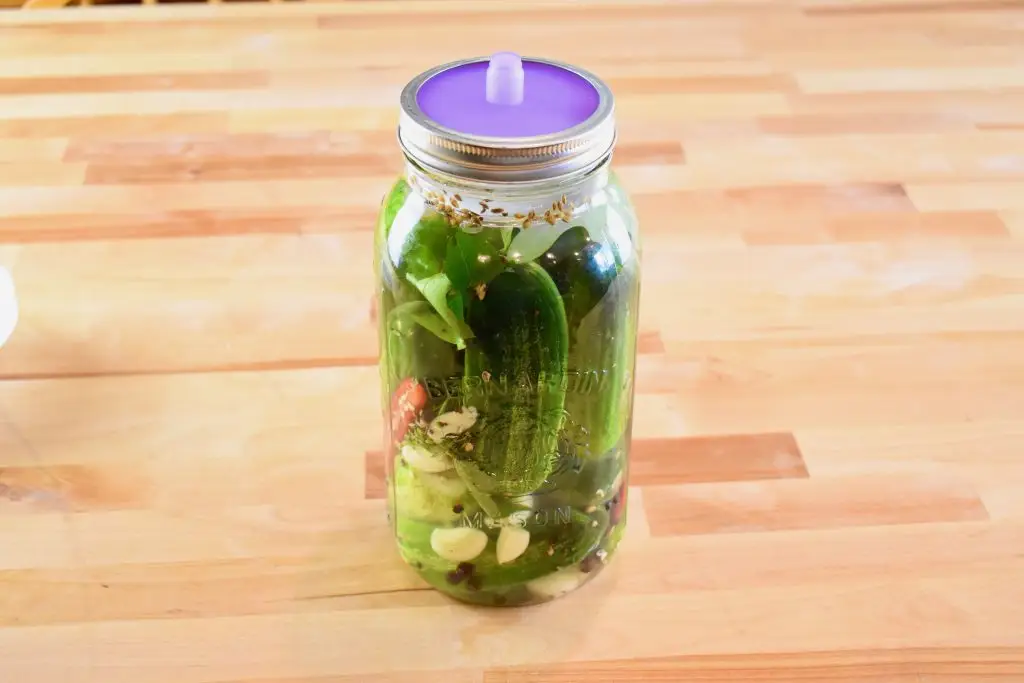
Rather than pickling in a vinegar solution, these cucumbers get lacto-fermented to develop their sour flavour. Kept in the fridge or a cool cellar, these pickles will last for months; that’s if you don’t eat them all right away! These pickles will resemble the ‘half sours’ you can find in cities like New York and Montreal. Using tools like the glass fermenting weights and rubber pickle pipe lids I used definitely makes things easier, but they aren’t necessary. Try using a plastic bag full of water to weigh down the contents of the jar, and it’s fine to use a regular mason jar lid, as long as you crack it open once a day to ‘burp’ it (let the pressure out)! It’s best to use wide mouth jars for this, as it is easier to get the cucumbers in and the pickles out!
- Prep Time1 hr
- Total Time1 hr
- Ready in1 Week
- Yield2 litres
- Cuisine
- Course
- Cooking Method
- Suitable for Diet
- Gluten Free
- Low Calorie
- Low Fat
- Vegan
- Vegetarian
- Approx. 2 lbs or 1 kg of pickling cucumbers
- 40 grams of Kosher salt (or other non-iodized salt) – Approx. 2.5 tablespoons
- 7 cups non-chlorinated water
- 2 dill heads (or a mixture of dill fronds and 1 tablespoon of dill seeds)
- 6-8 cloves of garlic
- 1 red or green chili, split lengthwise into 4 slices (optional)
- 2 teaspoons horseradish (optional)
- 2 tablespoons of pickling spice blend, or 1 teaspoon of each of the following: fennel seeds, mustard seeds, allspice, coriander seeds, peppercorns, red pepper flakes (optional)
- 4 tannic leaves*
Preparation
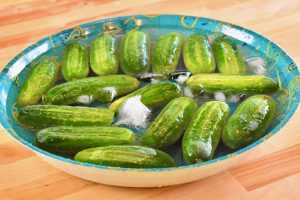
Wash cucumbers and soak in ice water for about 15 minutes. This will help them stay crunchy.
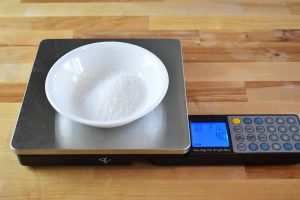
Meanwhile, weigh out 40 grams of non-iodized salt. This is really the best way to know how much salt to use, as each brand of salt differs in how much goes into a tablespoon.
Add the salt and water to a 2 litre, or two 1 litre jars and shake vigorously until salt has dissolved. Transfer to a large bowl or pitcher for the time being.
If shaking isn’t a possibility, add salt to water and bring to a simmer on the stove until all the salt has dissolved. Remove from heat and let cool completely.
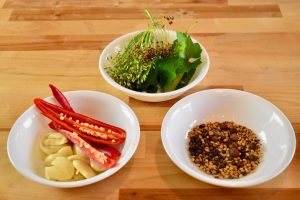
Prepare your ingredients. Smash the garlic cloves with the flat side of a knife and remove their peels.
Cut the chili if using and prepare your spices.
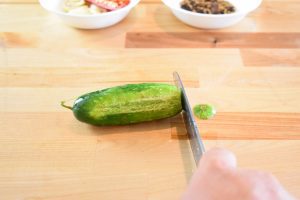
Slice off the blossom end of each cucumber. This is the end opposite to the ‘tail’ or vine-end. If you’re not sure which side is which, simply slice off both sides. This step also helps the cucumbers to stay crunchy as the blossom end contains enzymes that sometimes cause pickles to go mushy.
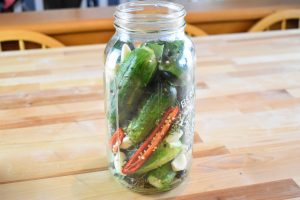
Stack ingredients into jar(s). I used a 2 litre jar here, but you could use two 1 litre jars.
Start with a tannic leaf, 1 dill head, 1/3 of the spice mix and 2 cloves of garlic. Add 1/3 of the cucumbers and repeat until jar is full.
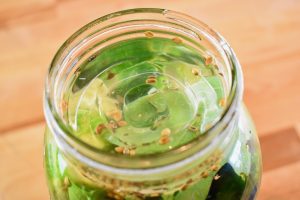
Once all ingredients are stacked in the jar, fill it up with the salt water brine.
Make sure all of the ingredients are covered but remember to leave a little headspace. Insert weight and push all of the ingredients down under the brine. This ensures that none of the ingredients will mold. Feel free to use a homemade weight for this.
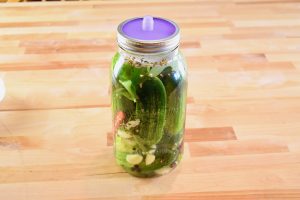
Put lid on jar. You can use a pickle pipe, air lock, or you can use a regular mason jar lid, but be sure to burp it daily by slightly opening the lid to release the pressure.
Let sit in a cool place out of direct sunlight for 3-4 days. By this point you should be able to see active bubbles in the brine. This means that your creation is alive and well! Taste a pickle; if you’d like it to be more sour and intense, leave it out for a few more days*. If you’re content with the flavour, put on a regular lid and move to the fridge, where it will continue fermenting very slowly. The jar will have taken on a cloudy appearance. This is completely normal. Sometimes garlic will take on a blueish hue, this is also normal!
Enjoy the pickles over the next several months if they last that long!
*Tannic leaves are added to the pickles to ensure that they stay crunchy. You can use bay leaves, grape leaves, oak leaves, raspberry leaves, horseradish leaves, or even a pinch of loose black tea.
*If the temperature is very warm, the pickles will ferment much faster than if it is cool.

